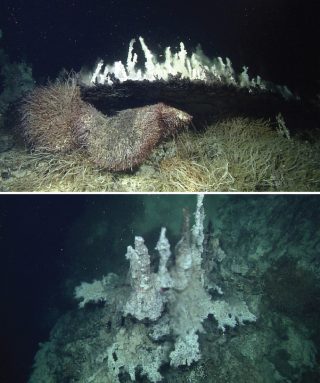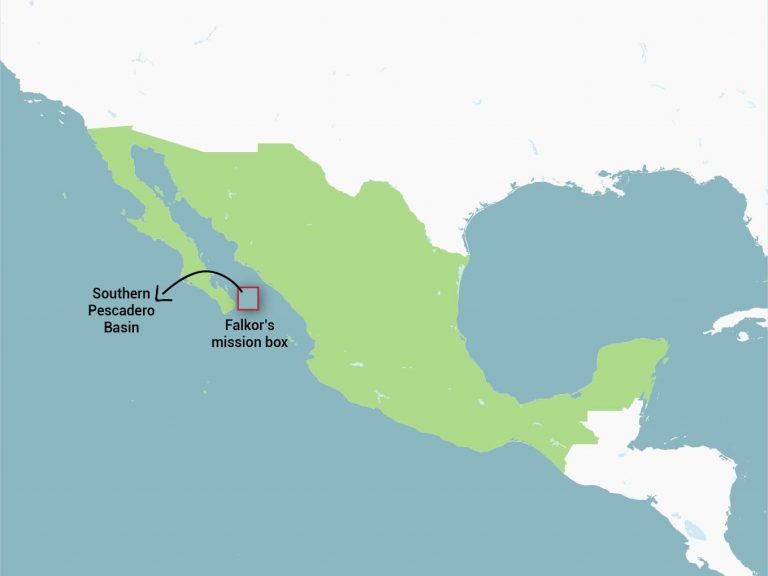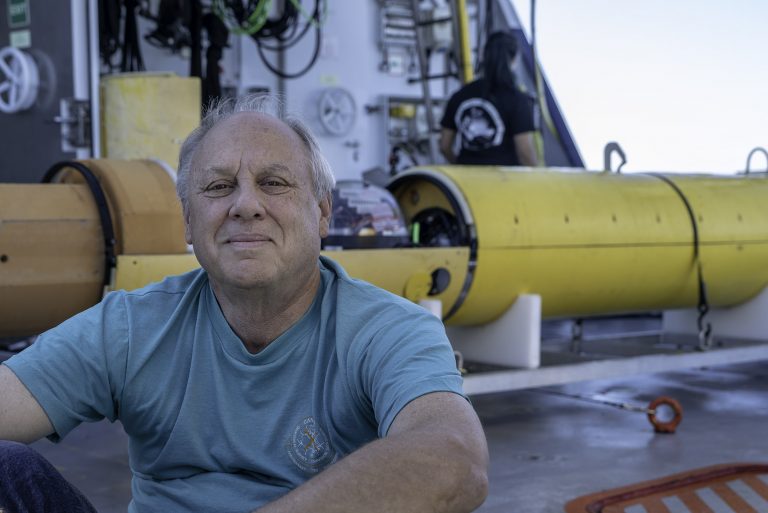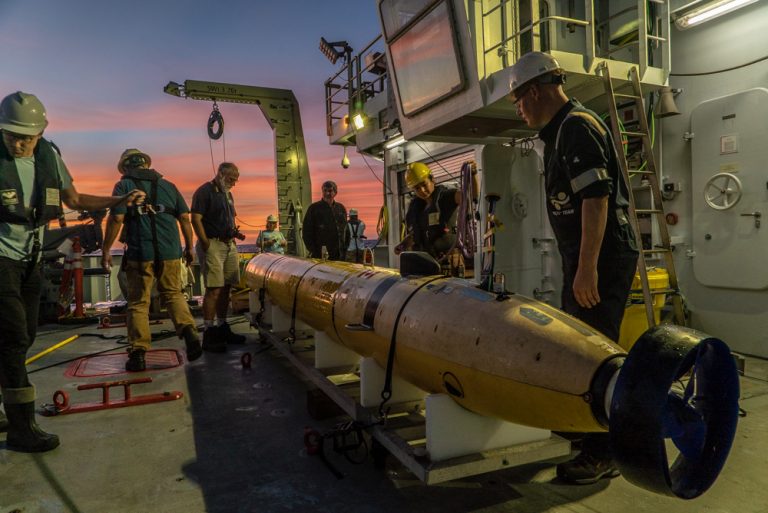Para una versión Español del este blog, por favor haga clic aquí.
It has barely been a day since Falkor set sail from San Diego in California, and it is time to get to work. Both the AUV D Allan B and ROV SuBastian have been in the water for tests, proving their systems are good to go. There are still a few days of transit ahead, so this seems like a good time to get familiar with the basics of the mission at hand.

What?
The hydrothermal vent fields on the Pescadero Basin were only discovered very recently – in 2015. The chemistry of their fluids and the mineral deposits are different than most known hydrothermal fields, which in turn makes the biological communities that thrive on them especially interesting. There is much to be studied and more discoveries are sure to follow. The team’s primary goal is to scan the site in very fine detail, through the combination of different techniques. The expedition also offers a valuable opportunity to advance key technologies to study the oceans, such as Lidar mapping and low-cost navigation systems for underwater robots.
Where?
Falkor is heading south from San Diego, towards the waters off Baja California. She will sail under the tip of Baja and into the Gulf of California reaching an area known as the Pescadero Basin. In this region of the world, tectonic plates are moving past one another along faults, which allows volcanic activity in some areas. The volcanism provides heat to drive hydrothermal vent fields.
“These hydrothermal vent sites show some similarities to the more commonly found black smokers, in that we think that the fluids are getting their heat from circulating into hot volcanic rocks,” explains Chief Scientist Dr Robert Zierenberg. “But in these sites the seafloor is covered by sediment, and when the fluids flow up through the sediment, they interact with it, changing their chemical composition.” At most black smokers sites when fluids come out through the seafloor they create deposits of iron, copper, and zinc sulfide. At the Pescadero Basin vent field, these metals are found in relatively low concentrations, which makes the team think they are being deposited beneath the seafloor due to the reaction of the hydrothermal fluids with the sediment. Interestingly, the hydrothermal deposits are mostly formed by deposition of calcite, which is composed by calcium and CO2. “Calcite is not supposed to be a stable mineral at these depths, but carbon dioxide is being sequestered in mineral form at this site, and we would like to understand that process,” explains Dr. Zierenberg.
Most hydrothermal sites are at about 2000 to 2500 meters deep, but the Pescadero Basin field is different because it lies at 3500 meters. With depth comes higher pressure and larger challenges.

When?
Right now. Once Falkor reaches the Pescadero Basin, the plan is to spend around four or five days mapping the known vent field at very high resolution. After that, the team will design an updated plan and determine which spots to study closer.
How?
Through the combination of different mapping technologies, the experts will produce a map that will be contoured at a centimeter scale resolution horizontally, with a vertical resolution of millimeters. The experts will be able to spot individual animals, map out communities and tie them to the geological signatures of the seafloor. Once they have that information, they will go back and collect detailed geological, geochemical and biological samples to determine how the entire system works. At the same time, they will be collecting new data through exploratory dives with the AUV, and they hope to find new targets for diving: “We’ll have time for around twelve dives if we’re lucky, at these different vent sites,” says Dr.Zierenberg.

Why?
The effort and logistics involved in the research of these unusual vent fields is considerable, so it is only natural to wonder, why do it? “The fundamental answer is: This is the way the Earth works, and we ought to understand that” shares Dr. Jennifer Paduan, a Research Specialist at the Monterey Bay Aquarium Research Institute. “We ought to understand the diversity here on Earth – both geologic and biologic – and how they interact. Another answer is that we might decide that these are important areas to protect from mineral exploitation of deep sea mining, but we won’t know until we understand them better.”
As the sun sets, both D Allan B and SuBastian are back on deck. The robots work, but Dr. Zierenberg is very aware that the tools are only as capable as the hands that employ them. “My role as Chief Scientist is to make sure that everyone gets done what they came here to do, so it’s not one person’s accomplishments, it’s making sure all the team works together to do the best science we can.” Dr. Zierenberg can’t wait – for the past two years he has been writing proposals and getting things ready for this very moment. “Seeing sites where we suspect there are new hydrothermal vents could be the highlight, but you don’t know – it might be nothing but mud. You don’t know until you go there. That’s the thrill of discovery.”


